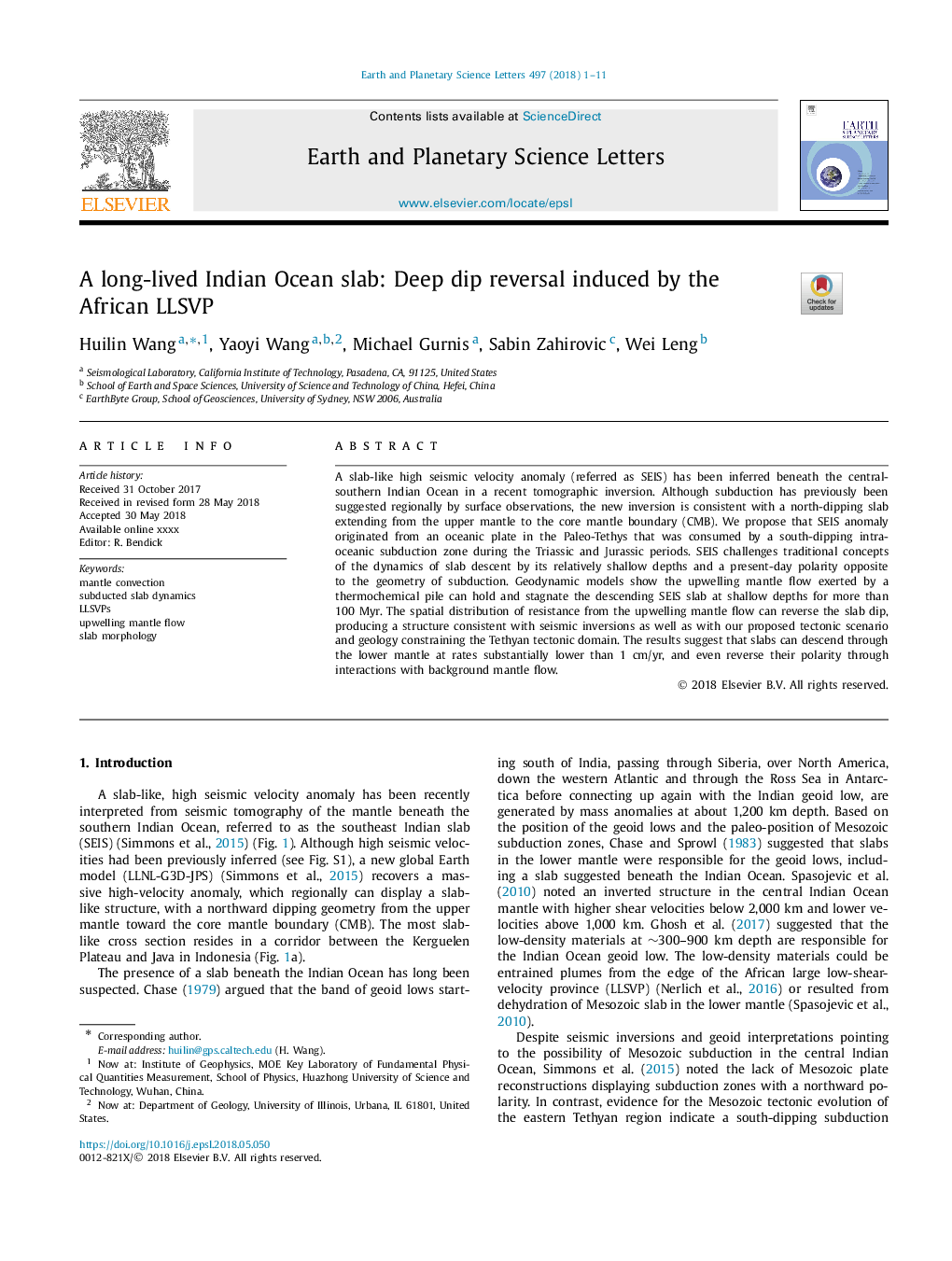| Article ID | Journal | Published Year | Pages | File Type |
|---|---|---|---|---|
| 8906741 | Earth and Planetary Science Letters | 2018 | 11 Pages |
Abstract
A slab-like high seismic velocity anomaly (referred as SEIS) has been inferred beneath the central-southern Indian Ocean in a recent tomographic inversion. Although subduction has previously been suggested regionally by surface observations, the new inversion is consistent with a north-dipping slab extending from the upper mantle to the core mantle boundary (CMB). We propose that SEIS anomaly originated from an oceanic plate in the Paleo-Tethys that was consumed by a south-dipping intra-oceanic subduction zone during the Triassic and Jurassic periods. SEIS challenges traditional concepts of the dynamics of slab descent by its relatively shallow depths and a present-day polarity opposite to the geometry of subduction. Geodynamic models show the upwelling mantle flow exerted by a thermochemical pile can hold and stagnate the descending SEIS slab at shallow depths for more than 100 Myr. The spatial distribution of resistance from the upwelling mantle flow can reverse the slab dip, producing a structure consistent with seismic inversions as well as with our proposed tectonic scenario and geology constraining the Tethyan tectonic domain. The results suggest that slabs can descend through the lower mantle at rates substantially lower than 1 cm/yr, and even reverse their polarity through interactions with background mantle flow.
Keywords
Related Topics
Physical Sciences and Engineering
Earth and Planetary Sciences
Earth and Planetary Sciences (General)
Authors
Huilin Wang, Yaoyi Wang, Michael Gurnis, Sabin Zahirovic, Wei Leng,
